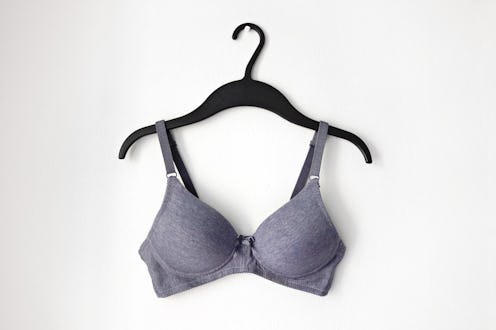
For the most part, bras tend to get a bad rap. They’re too tight. They’re too big. They pinch and poke in weird places. Knowing your exact size is a puzzle of numbers and letters to piece together. Finding a bra and brand you really love may take years. Bras are just, well, hard to figure out for a lot of people. It stands to reason that many are now asking the question: Do I need to wear a bra?
General disdain for bras might explain why not having to wear one as much these days — due to quarantining and social distancing — is a small silver lining. On social media, people are mostly enjoying this bra hiatus. One person questioned whether they’ll ever wear a bra again. Someone else remarked that they couldn’t even remember what a bra looks like. And the general consensus is that one of the main perks of working from home is the ability to go braless.
With so much going on in the world, it’s more than understandable that people are fully embracing the bra-free lifestyle. But if you’ve regularly worn a bra until now, you might be wondering, “Wait, do I need to be wearing a bra?” Or you may be curious about how bras affect breast sagging. Whatever the issue, read on for expert answers to all your pressing bra-related questions.
Do I need to wear a bra?
Put simply: nope. According to Dr. Lucky Sekhon, a reproductive endocrinologist, infertility specialist, and OB-GYN at Reproductive Medicine Associates of New York, bras don’t need to be worn for any specific purpose.
“No, it is not necessary to wear a bra,” Sekhon tells Bustle. “However, many women with large, full breasts may find it more comfortable to wear a comfortable bra to provide support.”
She adds that women with any size breasts who run or play sports should definitely invest in a comfortable sports bra to protect their breasts and chest wall muscles from pain and possible injury.
Will my breasts sag more if I don't wear a bra?
Consider this myth busted, too.
“Aside from the necessary support required to counteract repetitive stress from vigorous exercise and the impact of gravity, studies have not shown that regular bra wearing reduces breast sagging,” Sekhon explains. “Breast sagging is a function of genetics and how your muscles [and] tissue hold up to the test of time.”
If I don't wear a bra, will it make my chest muscles stronger?
Sekhon says while some studies show that the chest muscles that naturally support the breasts become strengthened over time if a woman forgoes wearing a bra, you generally want to proceed with caution here.
“Some claim that this may paradoxically result in firmer, perkier, rounder breasts,” she says. “It is important to exercise common sense and utilize a bra for support when it feels needed, and during activities where additional support makes sense, i.e. exercise.”
If your apparel is made from certain fabrics, it may be more comfortable to wear a bra because it can serve a protective purpose: Some materials are more likely to cause skin chafing and irritation.
And if your breasts are heavy, the sensible choice might be wearing bras regularly, which is totally OK, explains Phoebe Kunitomi, the founder and CEO of Okko. “For some of us, boobs are heavy, and without any support, that weight can strain your back and worsen posture,” Kunitomi says. “This is especially true if you do anything more than a low- to no-impact activity, even walking.”
Which factors are most important to keep in mind when shopping for bras?
“Right now, comfort is key,” says Holly Wilson, vice president of design at Soma Intimates. “Bralettes and wireless bra options that are super soft give you the support you need while being comfortable. You might forget you have one on.”
Many people do not realize that the band provides the primary source of support for bras, Wilson explains. It should be level all the way around your body and positioned just below your shoulder blades. It ought to be nice and snug but comfortable when you are seated.
“The edges of the cups should lie flat against your body, and your breasts should face forward and be positioned midway between your shoulders and elbows,” Wilson says. “Finally, your straps should be comfortable and stay in place. You should be able to slip a finger between your shoulder and strap, and you should readjust your straps with every wearing.”